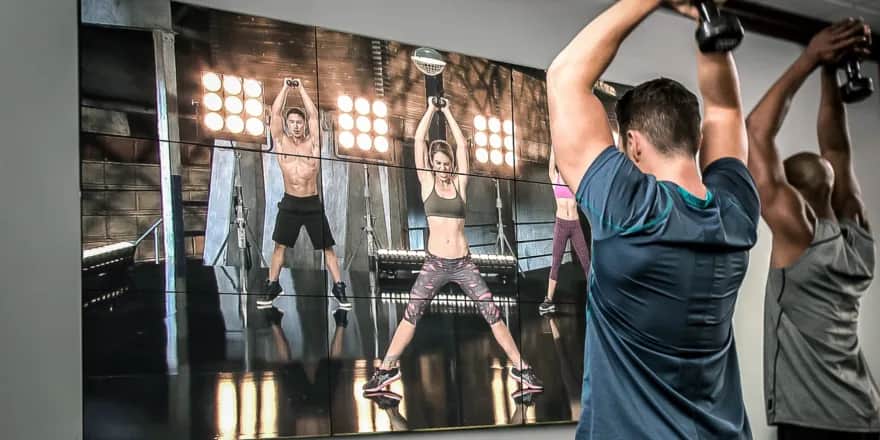
Are we doing enough for members who work out to feel good (rather than look good)?
On a recent podcast I did with Dr Steve Boring from Rochester Athletic Club, we talked about how improving mental health and wellbeing has become one of the main reasons for people to join a gym or health club. Steve has seen this first hand, with messages like “gym is my therapy” or “iron therapy” on gym members’ shirts.
The anecdotal evidence, such as Steve’s, from the gym floor, is certainly backed up by the data.
The Health & Fitness Association’s (formerly called IHRSA) Health Club Consumer Report indicates that improving mental health is a leading motivator for people joining gyms and health clubs. The report shows a growing trend of individuals seeking the mental health benefits of regular exercise, such as stress reduction, improved mood, and enhanced cognitive function.
While many say this trend is due to COVID-19 – as people in lockdowns realized just how much exercising lifted their moods – the trend to join gyms predates the pandemic. Mintel’s 2019 Health and Fitness Clubs Report showed how, 12 months before the COVID-19 outbreak, a third (33%) of gym-goers cited mental health improvement as their primary reason for membership.
The fact that exercise is good for your psyche isn’t a myth created by the fitness industry, either. In fact, it’s been clinically proven.
Research published by the American Psychological Association (APA) highlights that regular exercise promotes the release of endorphins, the body's natural mood lifters, and also increases blood circulation to the brain, influencing the hypothalamic-pituitary-adrenal (HPA) axis, which helps regulate mood. Another study, from Harvard Medical School, indicates that exercise reduces levels of the body's stress hormones, such as adrenaline and cortisol. It also stimulates the production of endorphins, chemicals in the brain that are natural painkillers and mood elevators.
In short, physical activity can significantly reduce symptoms of depression and anxiety. Those shirts that Steve saw weren’t just fashion statements – they were statements of fact.
The question then, is: are gyms, health clubs and studios ensuring they offer a supportive environment which helps members on their journey to better mental health through exercise? Or are they left to their own devices when they walk through the door? Are gyms trusting individual members to find their own methods of therapy through working out?
If so, they are taking a risk of losing those members to gym operators and fitness platforms which do cater for their specific needs.
At Fitness On Demand we’ve recognized this and that’s why we offer a variety of mental health and wellbeing content and services, making it a valuable platform for facility operators looking to improve their offering.
We have mindfulness and meditation classes, designed to help users reduce stress and anxiety, improve focus, and foster a sense of calm. We offer yoga and stretching programs, enabling members to engage in activities that promote relaxation, flexibility, and mental clarity. Yoga, in particular, is well-documented for its benefits in reducing symptoms of depression and anxiety.
We also recently welcomed MELT Method as one of our newest content providers. The partnership with MELT signals the launch of an entirely new category for Fitness On Demand – Joint, Stress and Pain Relief. MELT is a breakthrough self-care practice based on principles of neurofascial science. It has been designed to enhance mobility, stability and performance and is clinically proven to reduce chronic pain while restoring overall well-being.
Fitness On Demand includes workouts specifically aimed at reducing stress too. These range from low-impact exercises to HIIT and specialty cardio classes, which can make a direct impact on stress and fatigue, getting the heart rate up, the blood pumping and releasing endorphins to give you the post-exercise buzz.
There is also wellness coaching and guidance, as well as community and support networks. For this, our idea is simple – we want Fitness On Demand to foster a sense of community through group classes and challenges. Engaging with others in a fitness community can provide social support and a sense of belonging, which are critical components of mental health.
By integrating Fitness On Demand to your offering, you have ready-to-go resources to assist members who are more focused on how working out makes them FEEL, rather than how it makes them look. And we are constantly adding to the platform with this in mind.
If you want to know more about the unique Fitness On Demand offer, get in touch!

Author
Andy Peat
Andy Peat is a visionary with a rich background in product innovation, operational management, business expansion, and nearly 20 years of leadership experience in the fitness industry. He spent a couple of years refining his strategic and management skills as the Chief Product Officer at Lift Brands, before pivoting to expand upon his leadership skills and passion for fitness as the CEO of Fitness On Demand.
